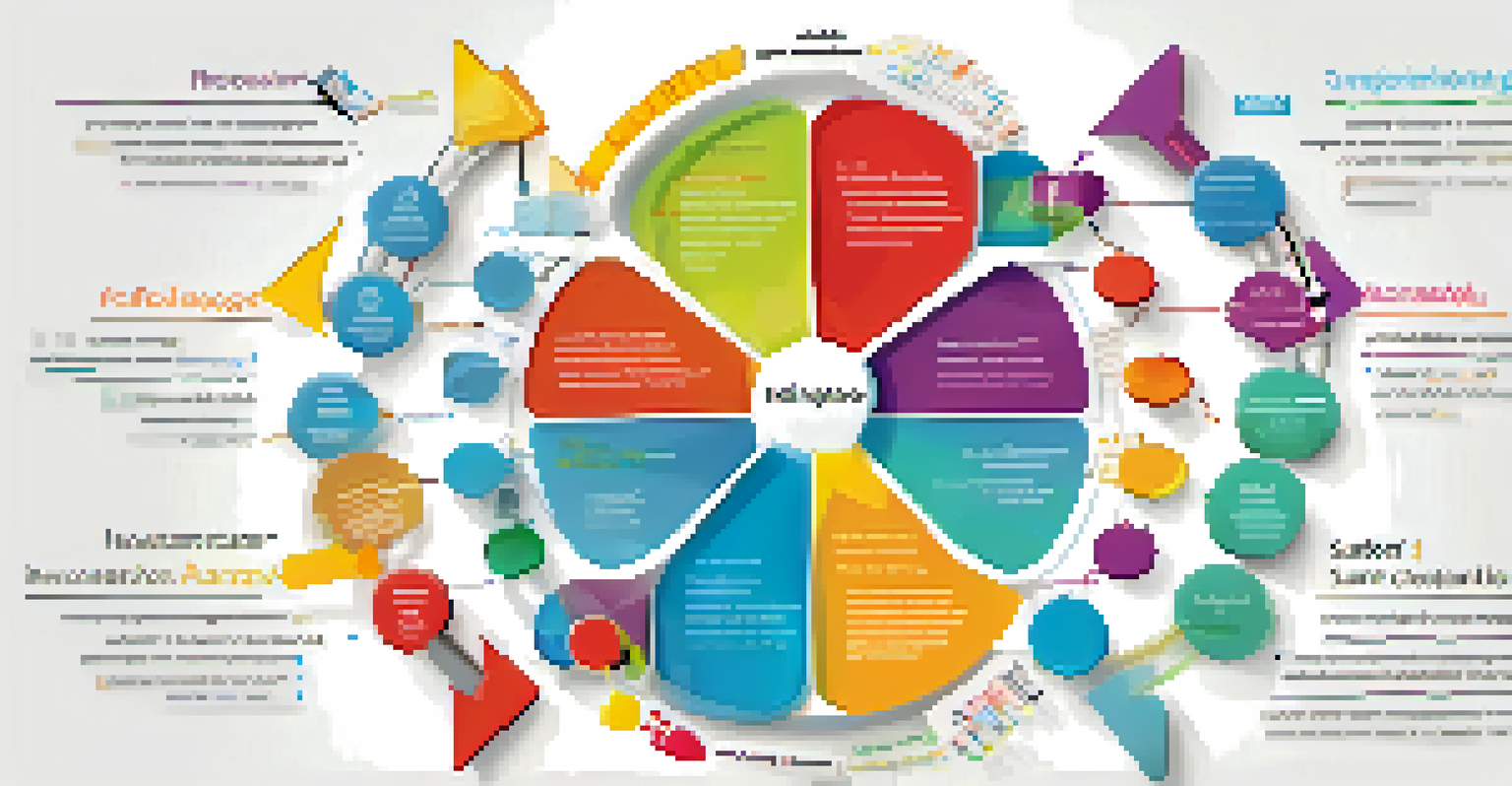How to Use Surveys for Continuous Improvement in LMS

Understanding the Role of Surveys in LMS Improvement
Surveys play a crucial role in gathering insights that drive continuous improvement in Learning Management Systems (LMS). They provide a platform for learners to share their experiences, preferences, and challenges. By understanding these aspects, institutions can tailor their LMS to better meet the needs of users.
Feedback is the breakfast of champions.
For instance, a well-designed survey can reveal gaps in course material, allowing educators to refine their content. This proactive approach not only enhances the learning experience but also boosts learner satisfaction. In essence, surveys act as a feedback loop that informs ongoing development.
Ultimately, leveraging surveys means embracing a culture of learning and adaptation. As LMS technologies evolve and user needs change, regular feedback ensures that the system remains relevant and effective. It’s all about creating a responsive learning environment.
Designing Effective Surveys for Your LMS
Creating an effective survey starts with clear objectives. What specific information do you want to gather? Whether it's feedback on course content or the user interface, having a focused goal will guide your survey design. A well-structured survey typically includes a mix of open-ended and multiple-choice questions.

For example, consider using a Likert scale for questions about user satisfaction, allowing respondents to express varying degrees of agreement. This not only makes analysis easier but also provides nuanced insights into learner experiences. Additionally, keep the survey concise to respect participants' time.
Surveys Enhance LMS Effectiveness
Regular surveys gather learner feedback, helping institutions refine their LMS to better meet user needs.
Remember, a good survey invites honest feedback by ensuring anonymity and confidentiality. When learners feel safe sharing their thoughts, they are more likely to provide genuine responses. This openness leads to richer data, which is invaluable for continuous improvement.
Choosing the Right Timing for Surveys
Timing is everything when it comes to surveys. Deploying surveys at strategic moments can yield the most relevant feedback. For instance, consider sending out surveys after the completion of a course or module, as learners will have fresh insights to share about their experiences.
Without feedback, you're just guessing.
Additionally, periodic check-ins throughout the learning journey can help capture ongoing thoughts and feelings. This approach not only encourages continuous feedback but also fosters a sense of engagement among learners. It shows them that their opinions matter.
However, be cautious not to overwhelm learners with too many surveys. Finding a balance is key to maintaining engagement without causing survey fatigue. Regular, well-timed surveys will ensure you gather meaningful data that can guide improvements.
Analyzing Survey Results for Actionable Insights
Once surveys are completed, the next step is analysis. Look for trends and patterns in the feedback, as these will guide your decision-making process. Quantitative data, like satisfaction ratings, can provide a quick overview, while qualitative feedback offers deeper insights into user experiences.
For example, if a significant number of learners express difficulty with a specific module, it may indicate the need for additional resources or support. Conversely, positive feedback can highlight successful practices worth retaining or expanding. The goal is to turn feedback into actionable insights.
Actionable Insights Drive Changes
Analyzing survey results reveals trends that inform necessary improvements in course content and user experience.
Visualizing data through charts or graphs can help communicate findings effectively to stakeholders. By presenting clear, digestible information, you can foster discussions around improvements. This collaborative approach will help ensure that changes are well-received and impactful.
Implementing Changes Based on Feedback
Once you’ve analyzed the survey results, it’s time to take action. Implementing changes based on feedback demonstrates your commitment to continuous improvement. This could involve updating course content, enhancing user interfaces, or providing additional support resources.
For instance, if learners express a need for more interactive elements, consider incorporating quizzes or discussion forums. Such changes not only address learner needs but also enhance engagement and retention. It's about creating a more dynamic and effective learning environment.
Communicating these changes back to learners is equally important. Let them know how their feedback has shaped improvements. This transparency fosters a sense of ownership and encourages continued participation in future surveys.
Creating a Feedback Loop with Regular Surveys
Continuous improvement is not a one-time effort; it requires an ongoing commitment to feedback. Establishing a feedback loop through regular surveys helps maintain a pulse on learner needs and experiences. By consistently seeking input, you can make incremental changes that lead to significant improvements over time.
For example, consider scheduling quarterly surveys to assess the overall effectiveness of your LMS. This regularity ensures that you stay attuned to any emerging trends or issues. Moreover, it reinforces the idea that feedback is valued and integral to the learning process.
Celebrate Feedback-Driven Success
Recognizing and celebrating improvements based on learner feedback fosters a collaborative culture and encourages future participation.
As you evolve your LMS, remember that feedback is a two-way street. Encourage learners to share their experiences, and be open to adapting based on their insights. This collaborative approach enhances the learning community and promotes a culture of continuous improvement.
Celebrating Improvements and Learner Contributions
As you implement changes based on survey feedback, take the time to celebrate these improvements. Acknowledging the contributions of learners creates a positive atmosphere and encourages ongoing participation in future surveys. Highlighting successes reinforces the idea that feedback leads to tangible results.
Consider sharing success stories or case studies that showcase how learner input has driven specific improvements. This not only recognizes their role but also illustrates the impact of their feedback on the learning environment. It’s a great way to foster a sense of community.

Ultimately, celebrating improvements cultivates a culture of collaboration and engagement. When learners see that their voices matter, they’re more likely to participate actively in the future, further enhancing the continuous improvement cycle.